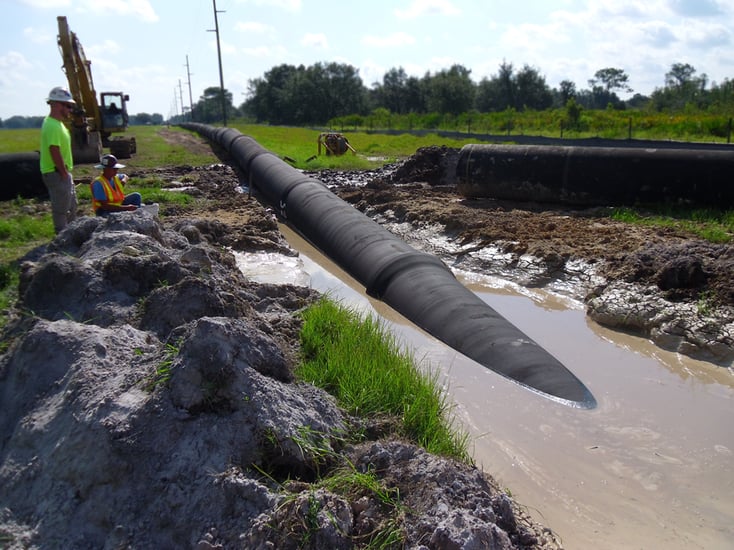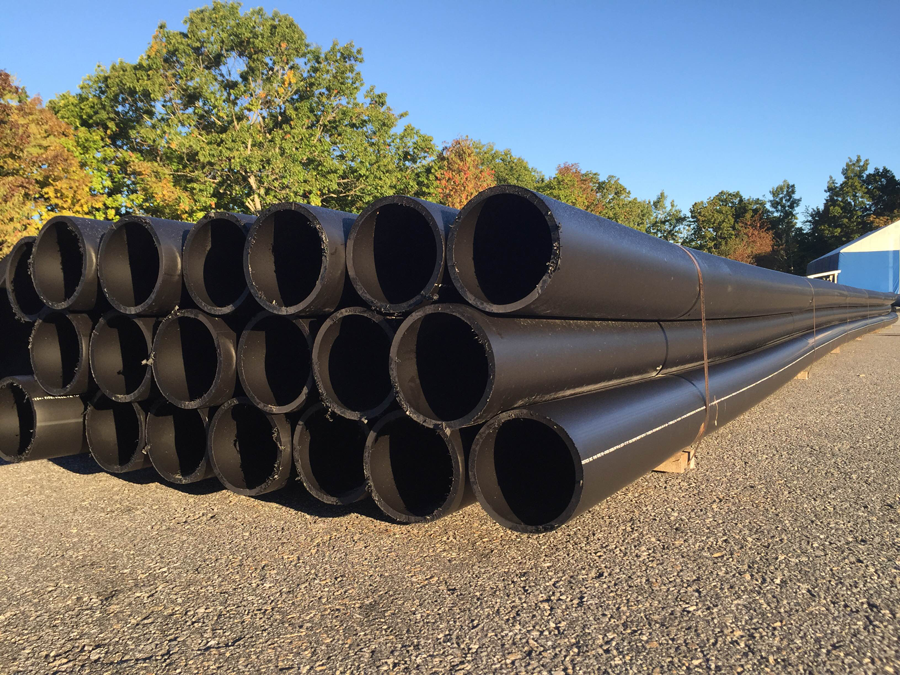Directional Drilling: A Comparison of Your Best Pipe Options
- Home
- Team EJP Blog
- Directional Drilling: A Comparison of Your Best Pipe Options
- Sep 25, 2015 12:38:51 PM
- Everett J. Prescott

When you're working on directional drilling, it can seem as though there are as many questions as there are answers. But when it comes to the piping you use for directional drilling when you're trying to prevent traffic disruptions and surface repairs, two main contenders go to the top of every list: ductile iron pipe and polyethylene pipe. But what are the advantages and disadvantages of each pipe variety? Which situations do they work best in and which should be avoided? In this post, we'll take a good, solid look at each pipe variety and how they hold up in different situations.
Ductile Iron Pipe
Ductile iron pipe is the standard in water transportation, though it's much more commonly used in open cut and cover operations than in horizontal directional drilling projects. It's been used with pipes up to 36" in diameter reaching lengths of over a quarter of a mile and pullback loads of up to 310,000 pounds. Though it has amazing strength, the pipe must be protected in corrosive soils using either polyethylene wrap or a 200 gram per square meter coating of zinc which acts as a limited cathode to reduce corrosion. A wide variety of connections can be made, including a number of connections that allow for more flexibility during installation such as the proven Flex-Ring system, a boon when the bore isn't as straight as it should be. The Flex-Ring system features a fast assembly and smooth transition during pullback, along with an available pulling bell assembly designed specifically for horizontal directional drilling applications. Ductile iron pipe works well in unstable soils where the pressure of the surrounding earth may be transmitted onto the pipe. Though it's a great material for difficult horizontal directional drilling projects, it's been slow to catch on due to the popularity and regular use of polyethylene pipe in past projects.
Polyethylene Pipe
 Polyethylene pipe is another great option in horizontal directional drilling and is the most commonly used material in this type of drilling due to its flexibility and original use in river crossings. It provides a passage for not only water, stormwater, wastewater, chemicals and other fluids, it's also been commonly used for gas mains as well as electrical and communications conduit. Starting out as a popular option for river crossings, highway crossings and right-of-ways through developed areas, polyethylene pipe has come a long way since its early development. Its fused system meets zero leak tolerance requirements, providing additional environmental protection in sensitive areas. It also deals well with scratching, a boon when you're going through rocky terrain while making your bore and pullback. It does not deal as well with unstable soils as ductile iron pipe, as the extra pressure caused by an unstable bore hole can cause the pipe to deform or collapse. It also tends to stretch somewhat during pullback, and most experienced operators will add 4% to the pipe length so the pipe ends don't draw back into the bore hole after pullback is completed.
Polyethylene pipe is another great option in horizontal directional drilling and is the most commonly used material in this type of drilling due to its flexibility and original use in river crossings. It provides a passage for not only water, stormwater, wastewater, chemicals and other fluids, it's also been commonly used for gas mains as well as electrical and communications conduit. Starting out as a popular option for river crossings, highway crossings and right-of-ways through developed areas, polyethylene pipe has come a long way since its early development. Its fused system meets zero leak tolerance requirements, providing additional environmental protection in sensitive areas. It also deals well with scratching, a boon when you're going through rocky terrain while making your bore and pullback. It does not deal as well with unstable soils as ductile iron pipe, as the extra pressure caused by an unstable bore hole can cause the pipe to deform or collapse. It also tends to stretch somewhat during pullback, and most experienced operators will add 4% to the pipe length so the pipe ends don't draw back into the bore hole after pullback is completed.
Now that you know which pipe type will work best in which particular situation, it's time to get started on your project. Take a good look at the specs for your project, consider the pros and cons of each type, then look at estimates for your project costs. If you still have questions or need more details about which type of pipe would work best for your directional drilling project, please feel free to contact the experts at Team EJP today. We're always happy to help make your project a great success.









